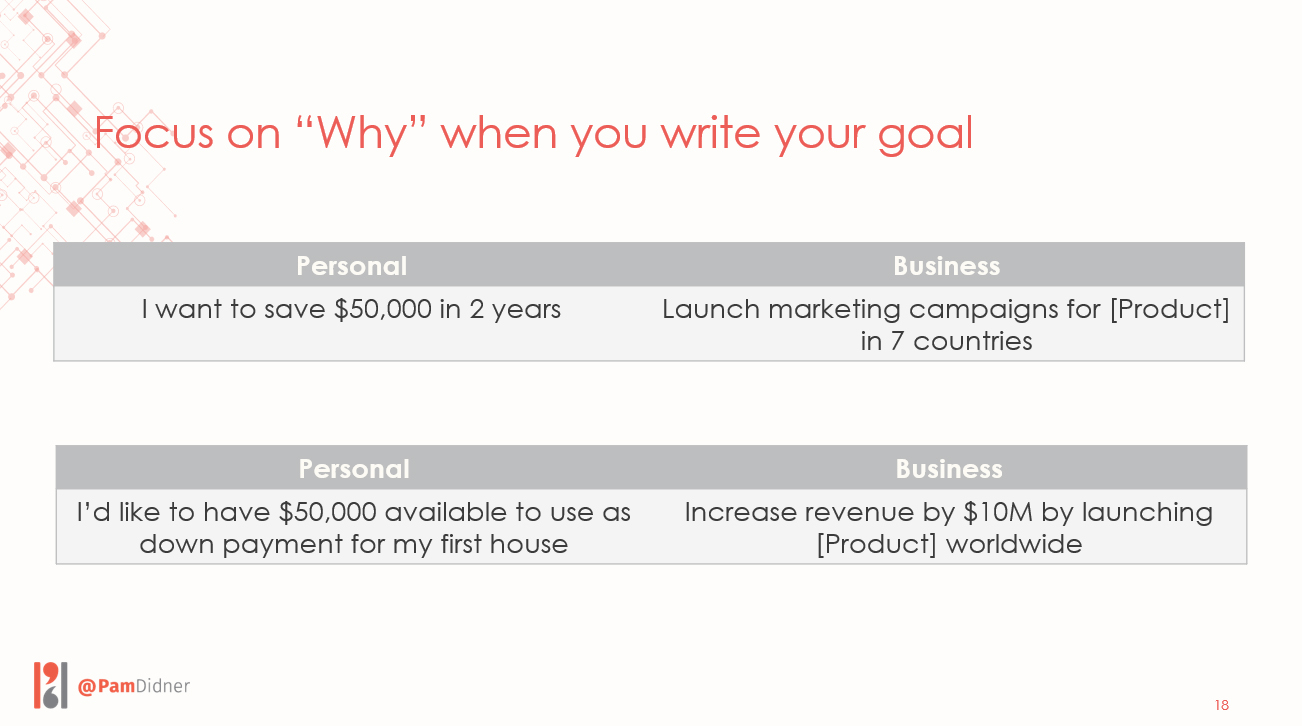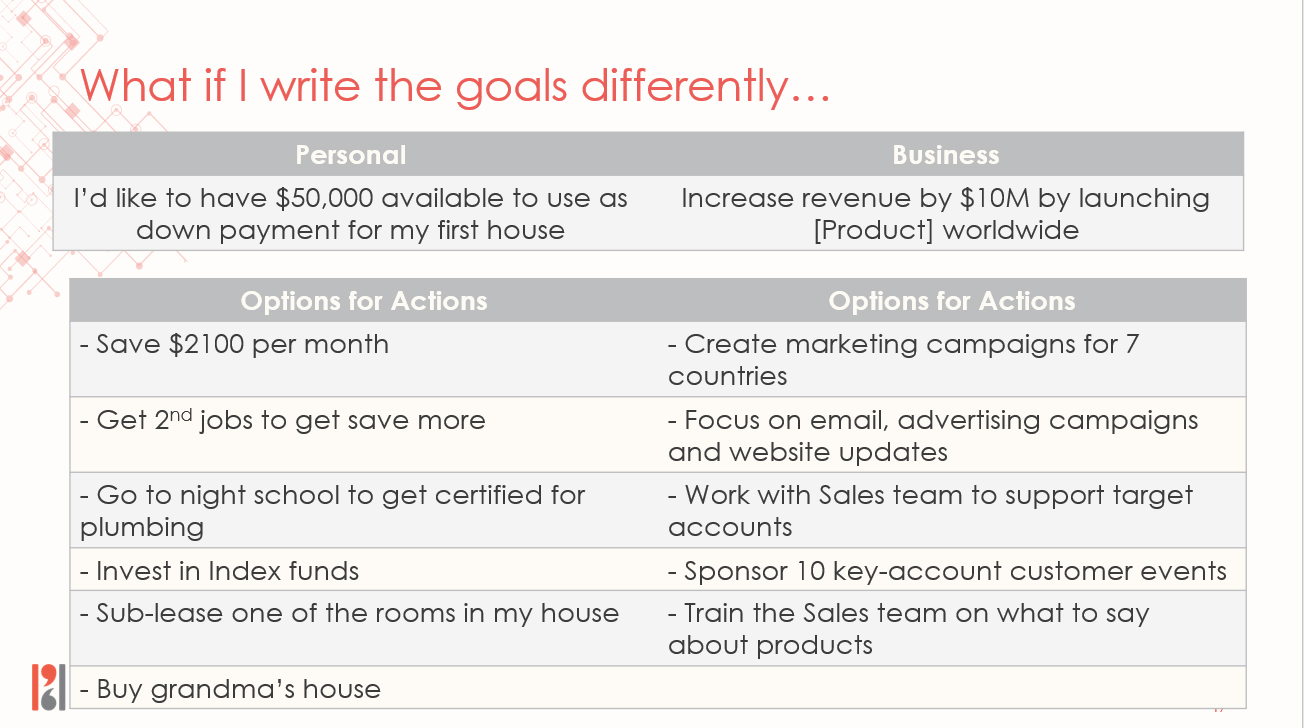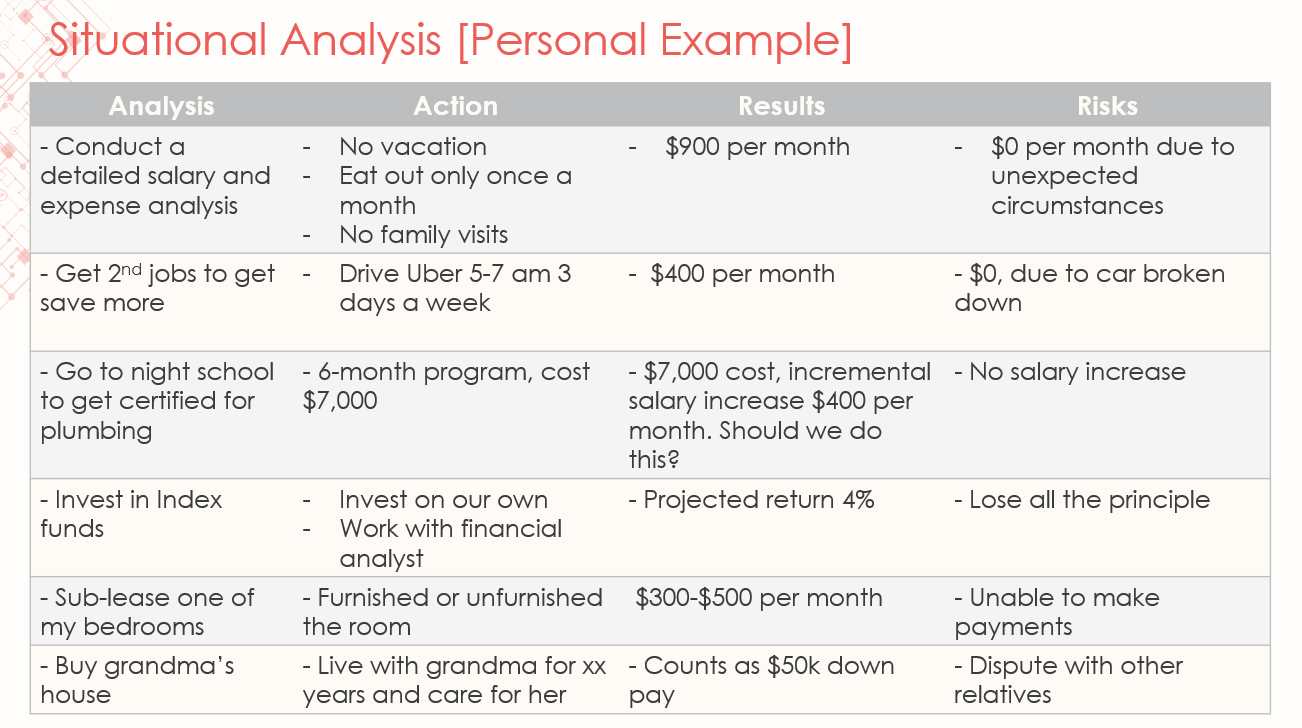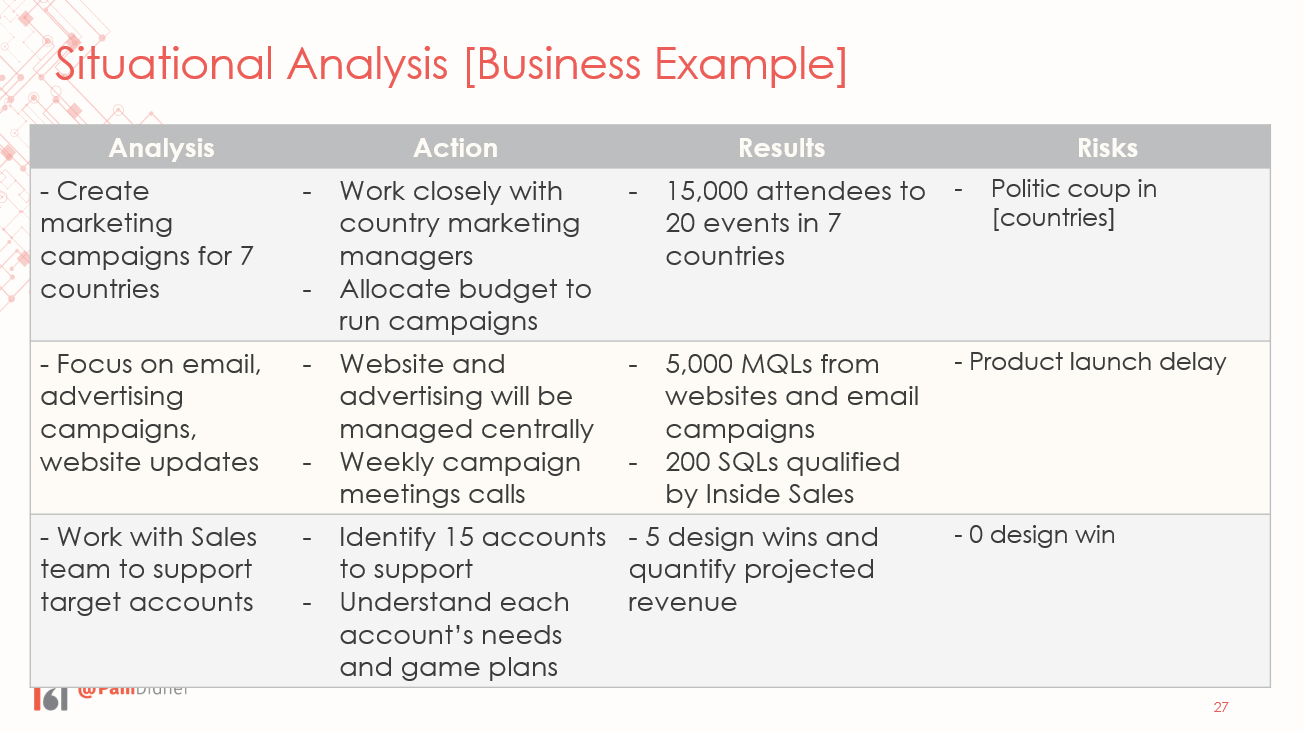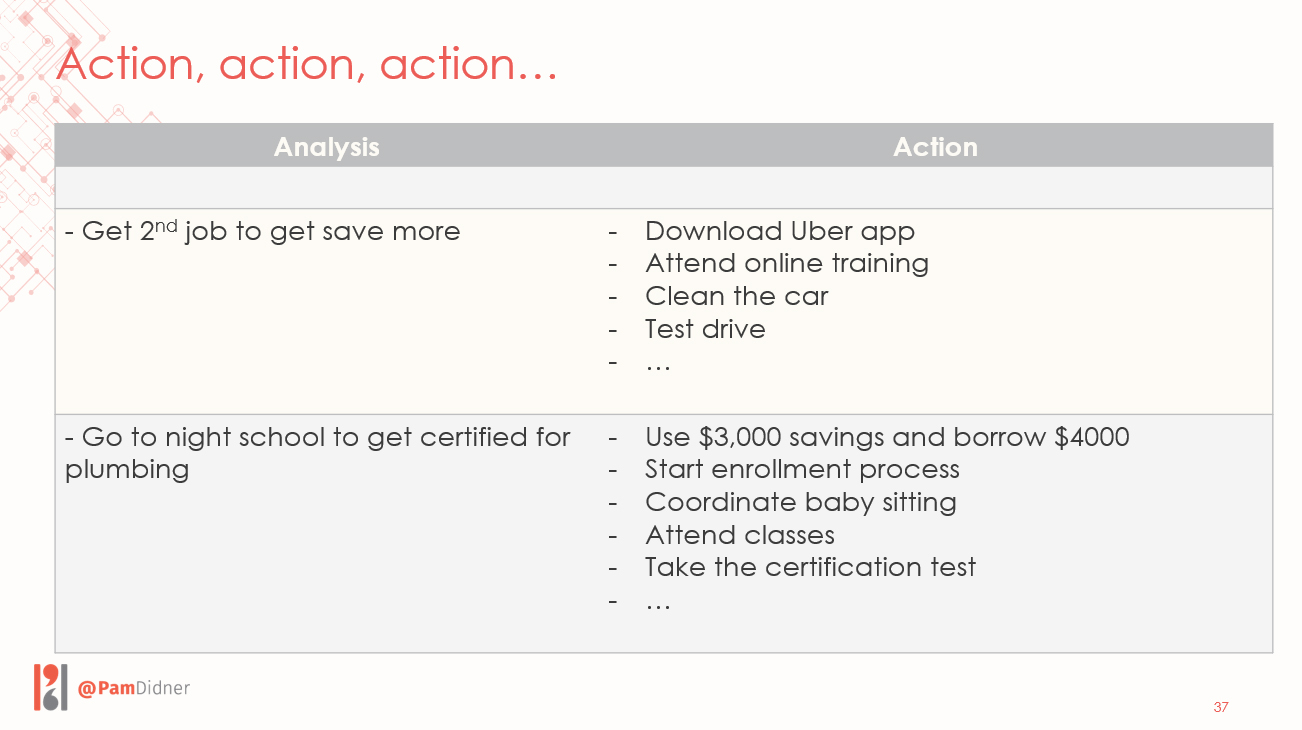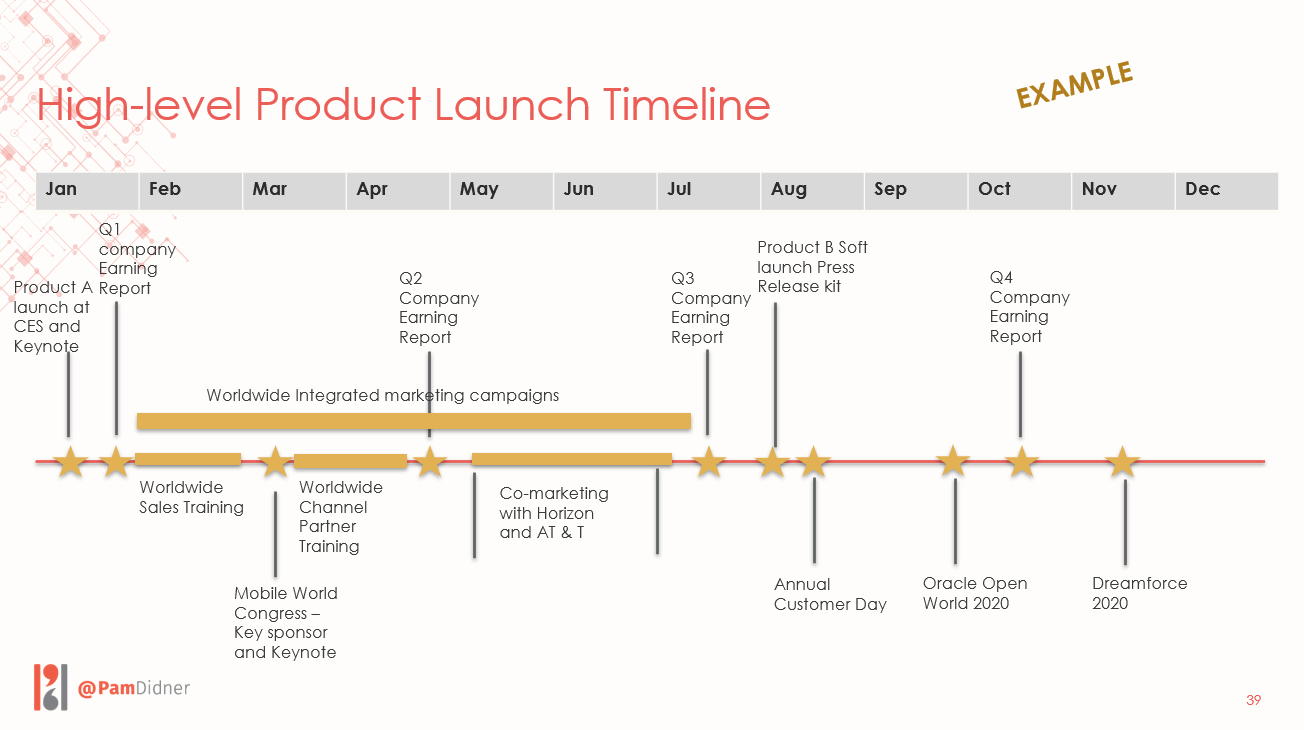
There is a general perception that strategic thinking skills are hard to obtain and that only senior executives or policymakers need to have a strategic mindset. The truth is that strategic thinking skills can be acquired, which is a good thing since the ability to think strategically is essential to maneuver through today’s complicated world.
I used to be an operations person, liked to move things forward and focus on tactics. I was able to develop the capability of thinking strategically through writing global go-to-market plans. This was necessary to enable different marketing functions to work together and numerous country marketing managers to plan and execute their local campaigns.
I learned by asking questions and by fielding others’ questions. I learned to listen and discuss different scenarios with many different teams from sales and product teams to country marketing managers. Also, I learned to openly discuss worst-case scenarios, such as budget cuts or headcount reductions.
Here are some simple steps that you can follow to develop your strategic thinking skills. In each step, I use both personal and professional examples to help you understand where and how strategic thinking applies.
Strategic Thinking
Steps to Cultivate Your Strategic Thinking
- Articulate your goals clearly
- Research and identify options to reach those goals
- Analyze the options and risks objectively
- Decide on a course of action based on your research and analysis
- Create an implementation plan
- Adapt and adjust along the way
Definition of Strategic Thinking
When you do a Google search, there are millions of definitions out there. Many definitions are abstract and it’s difficult to understand how to apply them to our lives and work.
Here are some definition examples I got from the Internet:
1. Strategic thinking means asking, “are we doing the right things?” and evaluating specific requirements…
2. Strategic thinking is to:
- Analyze opportunities and problems
- Take a broad perspective
- Anticipate the potential impact of your actions on others
3. Strategic thinking is the skill of analyzing and conceiving important ideas, decisions, strategies, and plans
For example: how do you define what is the “right” thing? The right thing for one business group in a company may not be a priority for others. what does it mean to take a broad perspective? The 3rd example is to analyze and conceive important ideas. What does it mean to conceive important ideas?
None of the definition is concrete enough to help us understand what strategic thinking is. If we can’t articulate what it is clearly, it’s hard to explain what to do to acquire that skill.
For this blog post, I define strategic thinking as:
“A thinking process applied by an individual in the context of achieving a goal.”
Note: I am not taking credit for this definition. It comes straight out of Wikipedia. 🙂
Benefits of Being a Strategic Thinker
The definition is concrete and clear. Basically, you can apply the ability to think strategically as long as you try to accomplish something or solve a specific problem. If this is the approach we take, we can practice strategic-thinking frequently because we face decision-making and problem-solving on a regular basis.
By thoroughly thinking through your options and evaluating them with sound analysis, you can clearly articulate to management or your family why you make certain decisions. As a result, you can influence naysayers’ point of view or persuade management to approve your decisions.
As a business professional, the ultimate benefit of thinking strategically is to demonstrate the ability to articulate a vision. Then, leverage the vision to lead.
Here are the auxiliary benefits of being able to think strategically:
- Help you identify various options to achieve the same goals
- Simplify complex problems by breaking them down to digestible chunks
- Understand the worst-case scenarios to prepare for adverse outcomes
- Quantify risks to prioritize options
- Reduce the margin of errors or chaos
- Embrace and confront unknowns when they happen
Articulate Your Goals Clearly
The key to strategic thinking is to understand the goal you want to accomplish or the problem you want to solve. It may sound easy, but it’s not.
Here are the two goals as examples:
- Personal Example: Save $50,000 in 2 years
- Business Example: Launch a marketing campaign for your company’s hero products in 7 countries.
Rather than writing your goal as it is, it’s crucial to understand “Why” you want to achieve the goal.
So, the real reason to save $50,000 is to buy a house. The launch of a product campaign is to generate $10M in incremental revenue.
When you write the goals, you need to write with the end-goals in mind.
Personal Example: I’d like to have $50,000 available to use as a downpayment for my first house
Business Example: Increase revenue by $10M by launching [Product] worldwide
Research and identify options to reach those goals
Writing a clear goal is vital because it guides your thinking process as you create different ideas to achieve your goals.
Personal Example: If you focus only on “saving” $50,000, you may miss other options to reach your ultimate goal. If you focus on “having $50,000 available to buy a house”, you’ll broaden your thinking beyond “savings.” Suddenly, ideas may include investing your savings or even buying your grandma’s house as options.
Business Example: Rather than launching a global campaign, let’s focus on generating incremental revenue of $10M. With that in mind, you start thinking about what marketing should do to support sales.
Here is a broad list of options when you write your goals with “why” in mind.
Analyze the options and risks objectively
Once you have a list of options, the next step is to analyze each option and the risks associated with it.
Personal Example: As part of saving $50,000 in 2 years to buy a house, you conduct a salary and budget analysis. You try to squeeze every penny. It means that you may not be able to travel or take any vacation.
With that, you project that you can save $900 per month. The risk is those unforeseeable circumstances such as a family member’s passing or a car accident etc. will dip into the projected savings. After identifying that risk, what would you do when that happens?
Business Example: In order to achieve the goal of increasing revenue, you work with the sales team to identify 15 accounts that would benefit from customized account-specific marketing outreach to complement the sales team’s game plans.
What if, even after this effort, sales won’t be able to close deals. What would you do when that happens?
Understanding risk forces you to confront many “what ifs.” Through answering these questions, you are slowly and surely developing your ability to think strategically.
The best way to cultivate strategic thinking is to address different possibilities, openly discuss the worst-case scenarios, execute the best you can, but anticipate the worst.
Decide on a course of action based on your research and analysis
Now that you’ve completed an analysis of what-ifs, the analysis and discussion will naturally guide you to a decision. There is no right or wrong decision when you make it. Chances are we won’t know the consequences of the decision until later. Hindsight is always 20/20.
The truth is we don’t know what we don’t know.
I love this quote from Ronald Rumsfeld, the Secretary of Defense:
“As we know, there are known knowns; there are things we know we know. We also know there are known unknowns; that is to say, we know there are some things we do not know. But there are also unknown unknowns—the ones we don’t know we don’t know. ”
Embrace and accept the unknowns when you make a decision. The way to deal with unknowns is to make adjustments during execution.
Create an implementation plan
Although many focus on the “thinking” part of “strategic thinking”, it is also important to focus on the execution of your plan. Through execution, you learn to monitor and adapt, which will bring your ability to live.
Personal Example:
In order to execute, it’s as simple as starting with a Google Doc or a Google Sheet. Create a project timeline, identify each task that you have to do and do them one by one.
Business Example:
I don’t recommend focusing on the detailed project tasks initially. I’d suggest creating a high-level timeline to align everyone, especially your management. Showcase the milestones by months, by products, or by departments. Present the information at a 64,000-foot level, then explain the details through progress or status updates.
Adapt and adjust along the way
Adaptation based on situational changes sharpens your strategic thinking skills. This is the meat of continuous strategic thinking development.
Depending on what is going on, you’ll need to come up with creative solutions to address developments. As much as we all hate changing direction, sometimes, you need to take detours to get where you need to go.
By talking with your family or friends in personal situations or working with your teams at work, you’ll start asking the question of “Why” and walk through different scenarios and potential risks. I often compare the ability to think strategically to the ability to articulate with clarity and adapt quickly.
It’s like answering difficult questions at a shareholder earnings call. Your responses need to be logical and thought-through. Before you can communicate with such clarity, you need to prepare and do your homework.
I firmly believe that strategic thinking skills can be acquired, but you need to make a conscious effort to cultivate them.
Your journey towards developing strategic thinking skills starts with a single step –> Articulate your goals clearly!
You can download the whole presentation by clicking on “Unit 6” of my Facebook community: Build Your Marketing Skills to Get Ahead
—————
Keep learning about marketing, sales, ABM, and technologies. Read some of my previous blog posts which will help you to grow; no matter how experienced you are.
A Complete Guide to Account-Based Marketing (ABM) For Marketers (Examples Included)
How to Deliver a Virtual Presentation to Management Successfully
Important Templates You Need To Update Your Marketing Plan AGAIN Post Covid-19
—————
Love listening to a podcast? Subscribe to my B2B Marketing and More podcast on your favorite podcast platform or leave a 5-star review and subscribe to Apple Podcasts.
If you prefer watching a video, I also have a YouTube Channel, check it out and subscribe.

